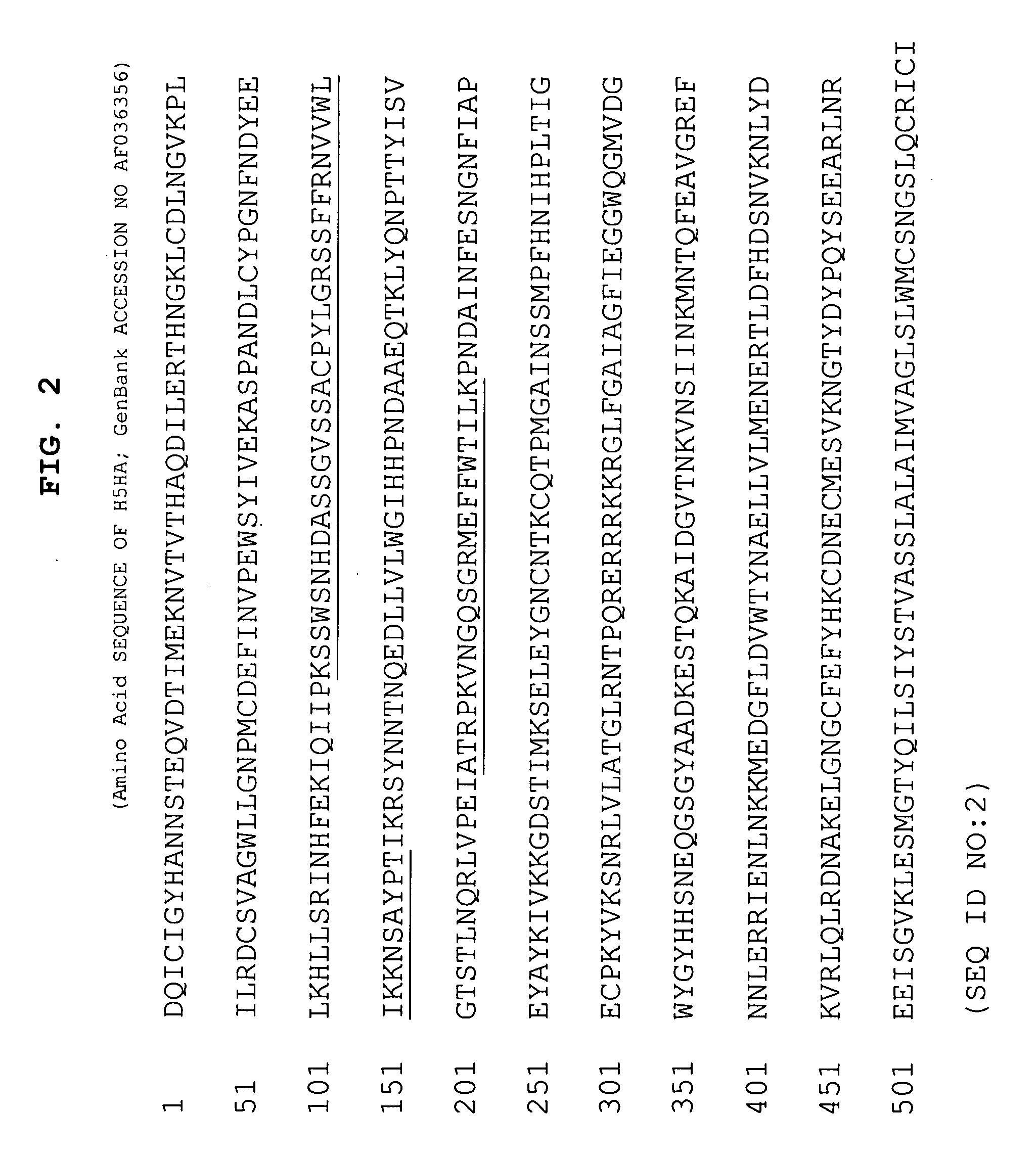CD40 ligand fusion protein vaccine
a technology of fusion protein and vaccine, applied in the field of vaccines, can solve the problems of potential for pandemic, ineffective old influenza viral vaccine, formation of reasortant viral strains,
- Summary
- Abstract
- Description
- Claims
- Application Information
AI Technical Summary
Benefits of technology
Problems solved by technology
Method used
Image
Examples
examples
[0152] 1. Construction of Adenoviral Expression Vectors (General Considerations)
[0153] Details for constructing adenoviral expression vectors containing a transcription unit encoding a fusion protein that includes an antigen fused to CD40 ligand can be found in U.S. Patent Application Publication US 2005-0226888 (application Ser. No. 11 / 009,533) titled “Methods for Generating Immunity to Antigen,” filed Dec. 10, 2004. This publication describes the preparation of expression vector sig-ecdhMUC1-ΔCtΔTmCD40L, which encodes a signal sequence (from an Ig kappa chain) followed by the extracellular domain of human MUC1 which is connected via a linker to a fragment of the CD40 ligand (human or mouse), which contains the extracellular domain without the transmembrane or cytoplasmic domains. The fusion protein was engineered to be secreted from vector infected cells by the addition of the kappa chain signal sequence to the amino-terminal end of the fusion protein. As described therein, the t...
PUM
| Property | Measurement | Unit |
|---|---|---|
| periods of time | aaaaa | aaaaa |
| molecular weights | aaaaa | aaaaa |
| molecular weights | aaaaa | aaaaa |
Abstract
Description
Claims
Application Information
 Login to View More
Login to View More - R&D
- Intellectual Property
- Life Sciences
- Materials
- Tech Scout
- Unparalleled Data Quality
- Higher Quality Content
- 60% Fewer Hallucinations
Browse by: Latest US Patents, China's latest patents, Technical Efficacy Thesaurus, Application Domain, Technology Topic, Popular Technical Reports.
© 2025 PatSnap. All rights reserved.Legal|Privacy policy|Modern Slavery Act Transparency Statement|Sitemap|About US| Contact US: help@patsnap.com



